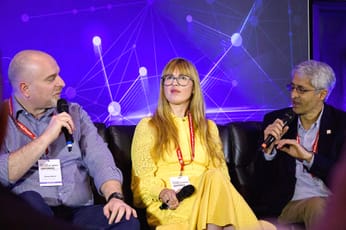
Zeit Online: hunting the millennial online – and offline.
I’m at WAN-IFRA’s Digital Media Europe conference in Copenhagen for the next few days. This is the first of my liveblogged session notes from the event.
Christian Röpke, CEO, ZEIT ONLINE

Die Zeit has a 500,000 paid circulation as a weekly newspaper – and their weekly nature means that they lack many of the problems dailies have in balancing print and digital operations. Their circulation is 10% digital, and is growing 30% year on year. Online they reach 11.4m uniques per month.
35% of their audience in under 29 – higher than their competitors. It’s a stable figure – they’re young, but they want to get even younger. Why? Because you can’t just focus on today’s customers – you need to put effort into creating your future customers.
Four strategic aims
- Quality advertising of premium reach – display advertising isn’t dead – and as publisher we need to tell that story. Their business grew by 10% last year.
- Digital circulation/paid content – they’ve sold through apps, but now they’re adding paid content on the websites.
- Classified offerings – in niches (academic positions, top positions at NGOs)
- Focus on millennials – you can’t look at the future without looking at your future readers.
They’ve focused on mobile to reach millennials – and with mobile “cards” in particular – a design language that works for “flipping” behaviour for millennials. “We are not afraid of mobile”. Mobile display advertising is growing strongly for them.

Up until now Die Zeit has been sold as a single product, and Zeit Online was a separate thing – the print articles only hit the websites three or four weeks longer. They’ve now mixed the two in the Z+ product.
Digital-only and digital-and -print bundles are growing strongly – app store revenue is pretty much flat.
Targeting young readers
Zeit Campus – is a new editorial platform for students. It has a distinct design feel from the main part of Zeit Online, but it is still part of the wider product. Their first article – about ghostwriting of articles – went strongly viral. The key idea is orientation – helping students figure out what they want to do at university. They built an online tool to help people make those decisions.
They’re also reaching out to the younger demographic with events. event: Z2X – the Festival of New Visionaries in Berlin for 600 people. It’s not a one-off – they’re doing series of them.
And their launching niche sites. For example, ze.tt – launched in July 2015 and run by a small, separate team, based in a loft in Berlin. It targets the 18 to 30 year old demographic. They run recruiting events called “work & play”. These are at least partially gamified, so rather than “speed dating” potential employers or employees, you play escape room games with them.
Key lessons
- Find your own fundamental laws on display, mobile and homepage traffic.
- The homepage is not dead.
- Keep adding and expanding business models,
- Understand young readers
- Understand your market position. They choose to be premium.
Analysis
A couple of core points here:
Community development
The strategy for developing young, mobile readers is a classic community play:
- Identify a target audience
- Identify content that they will find useful
- Develop that content
- Give them a sense of involvement through distinct branding
- Grow that out into events.
That creates an emotional/intellectual double whammy that builds loyalty to your brand – and that loyalty is more likely to convert into paid subscriptions, if you can prove value.
Income diversity
Like many larger businesses, Dei Zeit is realising that there won’t be a single saviour business model that will enable transition to digital. A diverse range of business models targeting different sections of your audience is much more viable – and provides a greater safety net.
Nothing especially innovative in the ideas underlying the approaches shown here – but some good, thoughtful and sustainable execution.
Sign up for e-mail updates
Join the newsletter to receive the latest posts in your inbox.










